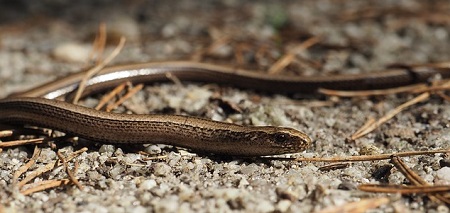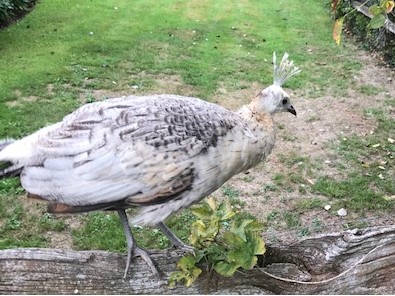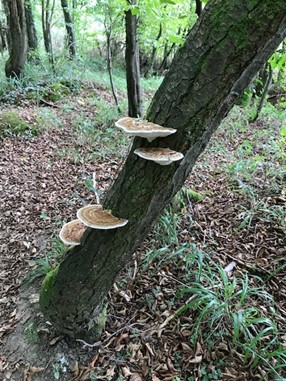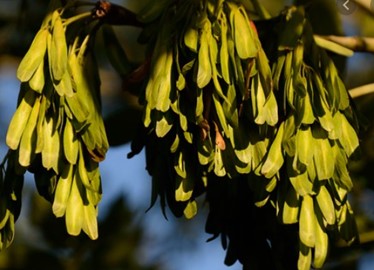Living Planet
Nature · Earth · ClimateNature Notes: October 2020
A CHANGE IN THE SEASONS ...
It's been a sizzling September! Golden streams and long low beams lit up verdant green fields in diamond yellow and emerald light, as well as pastures studded with edible jewels of Field and Parasol mushrooms. Sunrises were still and ponderous whilst sunsets laden with golden fleeces encouraged the loud feather-flutter and prolonged purring, bubbling and coo-coo-cooing of Wood pigeons mating.
Almost in the same suspended breath, some Wood pigeon and Collared Dove egg-shells could be found strewn alongside paths amongst this year's bumper mast of acorns and along woodland edges where slow worms gave birth to live young. These thin slivers of silver and gold with a dark stripe, found, like treasure, under stones, bricks, logs and in compost heaps, developed inside eggs that remained in the mother's body until they were ready to hatch. At only 4-6cm long they are already miniature version of their ruler-sized parents who can escape predators (cats, hedgehogs and pheasants), by shedding their tails, although they don't grow back! These harmless heat seekers will now spend the Autumn fattening up on slugs, borrowing into the soil and preparing for hibernation towards the end of October/beginning of November.

The first squalls and easterlies of Autumn accompanying the rains at the beginning of the month had already begun speeding swallows and house martins on their way, but soon they will be swirling in redwings and fieldfares. A surreal Silver Peahen complete with majestic crown glided, ghostlike, across my path in the still, early morning mist before disappearing into the ruins down the path from Hill House to the back of Crosby Farm. A resident wounded Magpie I had been nursing with a dodgy eye and then a broken wing passed away but another old feathered friend - a Willow Tit has joyfully returned to the feeder and a charm of goldfinches have been delighting with their liquid twitter, as they dart in and out of a sturdy oak.

Now, rather tide-like, late summer and autumn are on the turn - even the first full moon of the month (the Harvest Moon on 1st October) rising large, round and in pumpkin orange. The fresh greens ushered in by the rains of late August, which glowed green/gold in September will soon be transforming into reds and russets, plums, sepias and yellow ochres, whilst the woods will glow with the spreading fires of richly tinted leaves, adorning strapping limbs or lying face-upwards beneath. A few early ones I spied being gently cradled, as if thoughtfully caught, by the hands of Artists Conk (otherwise known as 'Shelf fungus') strategically growing like step ladders up the trunk of bark and cushioning their fall.

Shifting shades and colours dot the hedgerows and in sunny orchards, a few red admirals still flitter as they feast on windfall fruit. All seems full of roundness, beauty and life. An antidote to the disease that currently sweeps our shores. But spare a thought for our beloved Ash trees who are susceptible to the spores of an Asian fungus usually carried by the wind between July and October, bringing 'Chalara' or Ash Dieback Disease to our village.
This valuable, iconic 'Venus of the Woods' has long provided man with everything from axe handles to hockey sticks, oars to the frame of Morgan cars. Each is also a habitat for a plethora of wildlife, from homes for owls, woodpeckers, redstarts and nuthatches, to food for a variety of caterpillars (their leaves) and bullfinches and humans (their seeds - which are also used in herbal medicine). Their airy canopies, that seem almost to be holding up the sky, allow sunlight to reach the woodland floor, encouraging the spread of wildflowers which support a range of insects and a number of other invertebrates, mosses and lichens live on the trunk. The diseased spores penetrate through the leaves and the fungus then grows inside the tree, eventually blocking its water transport systems and causing it to lose its leaves and stunning crown, until it dies. Under attack, as its bark splits and its branches break, it stands, head still high, holding onto hope for the future, by dispersing its fruit seeds, the keys which rattle down and are carried by birds and mammals into pastures new.

There is hope, some trees are resistant and research is still being carried out. The Forestry Commission advises keeping as many standing as possible and identifying those which appear to survive exposure to the fungus. For more information or if you think you've spotted the signs then please contact the research agency of the Forestry Commission. Your contributions could help provide a very different key to the future and help retain the face of our own country home.
Wishing you all a happy, healthy and colourful October!